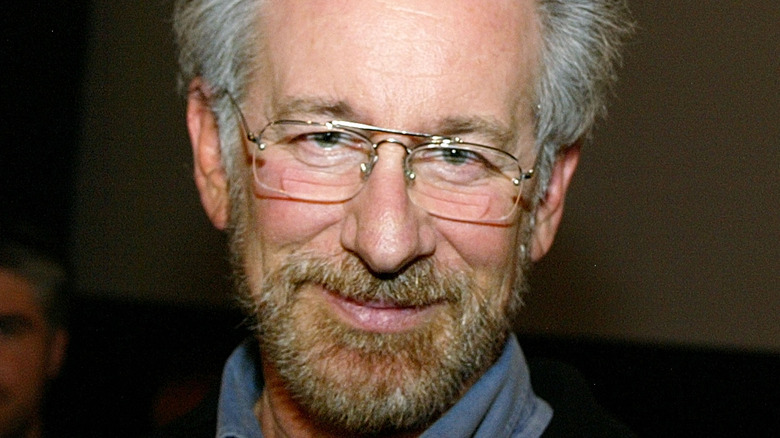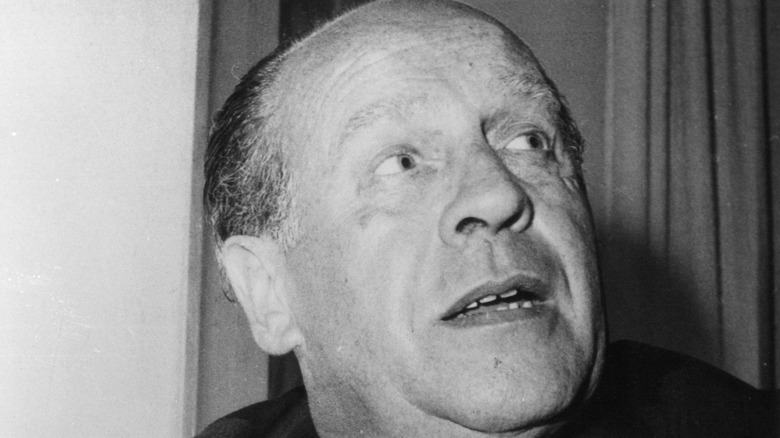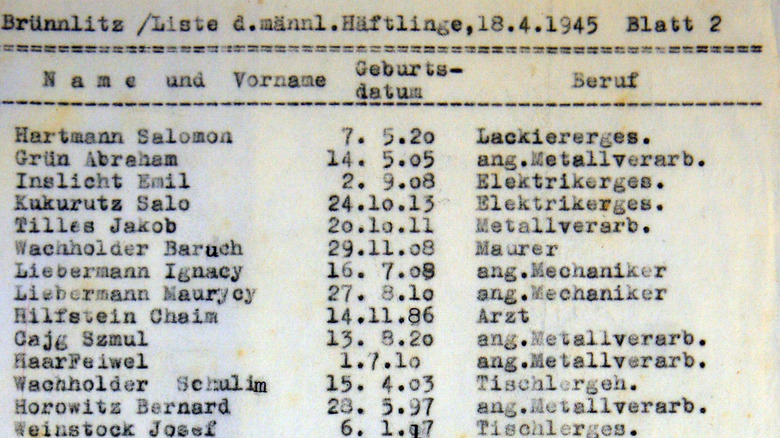How Historically Accurate Is The Movie Schindler's List?
One of the high-water marks of 1990s cinema was director Steven Spielberg's 1993 magnum opus, "Schindler's List." The film, which garnered Spielberg his first-ever Academy Award for best picture, according to History, is based on a book of the same name, which is itself based on the true story of Oskar Schindler, a German factory owner who saved hundreds of Jewish lives during World War II.
The film takes place within the context of documented, recorded history, and as such is based on a true story — to a point. Indeed, the film, and the book on which it's based, retain the general outline of the true story. Oskar Schindler was a real man who really did own a factory, and he actually did help hundreds of Jews escape death during the Holocaust. Further, the unfettered brutality of the Nazi regime, and the horrors of the event, are on full display in the film.
However, as is almost always the case with "based-on-a-true-story" films, the movie, and the book on which it's based (per Time), are works of historical fiction and take multiple liberties with the actual events from history.
The movie leaves out an important person
As depicted in the film, the origin of the list of Jewish names saved by Oskar Schindler is rooted in when Nazis began forcing the Jews of Krakow, Poland, into ghettos. Schindler sees a way to make some money, effectively by buying a factory and using Jews as slave labor, and begins bribing his way into business. That their employment effectively spared them the gas chamber was something of an afterthought, according to Time.
As it turns out, the idea to use Jews in Schindler's factory wasn't Schindler's at all, but that of Abraham Bankier, a Polish Jew who, like Schindler, owned a factory. In fact, according to History Collection, Bankier was essential to Schindler's scheme, maintaining contacts with black marketers who could supply the businessman with materials that he could use to bribe officials, as well as with products he needed for his business. Bankier is completely left out of the film.
There were multiple Schindler's lists, not just one
In the film, "Schindler's List" refers to an actual list of names (pictured above). And while that list was a real document on which names were printed, in a broader sense the list serves as a metaphor for all of the Jews saved by Schindler, whether they appeared on the list or not.
As it turns out, there wasn't just one list: There were several. In the film, as History Collection notes, the list came about in 1944 as the Allies were closing in, and the Nazis moved their concentration camps and factories, to the west. Schindler's factory was moved towards Brunnlitz, and a list of names — the names of Jews who worked for Schindler and would continue to be allowed to work for him in Brunnlitz, rather than sent to the concentration camps — was produced. However, Schindler had little to do with the production of that list. Further, there wasn't just one list, but several, possibly as many as nine. The industrialist would later tell his workers that they shouldn't thank him, but Itzhak Stern, his accountant, and Mietek Pemper, another Jew Schindler helped save.


